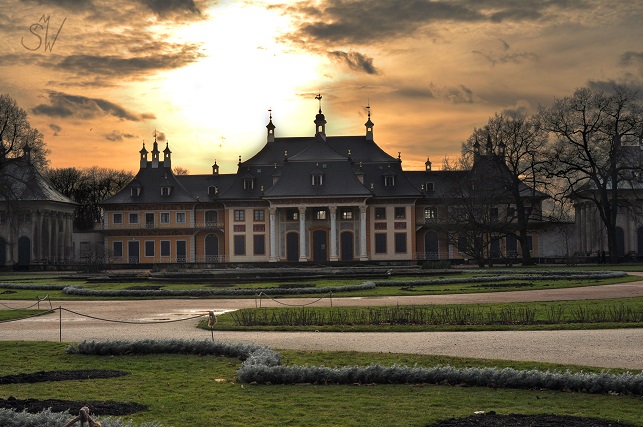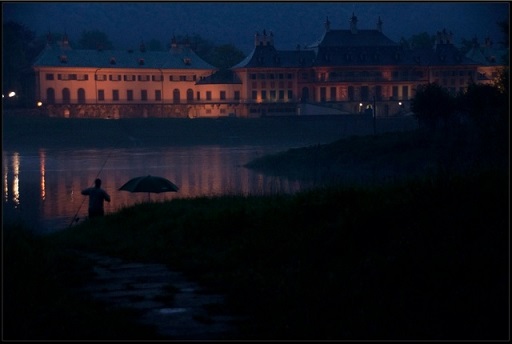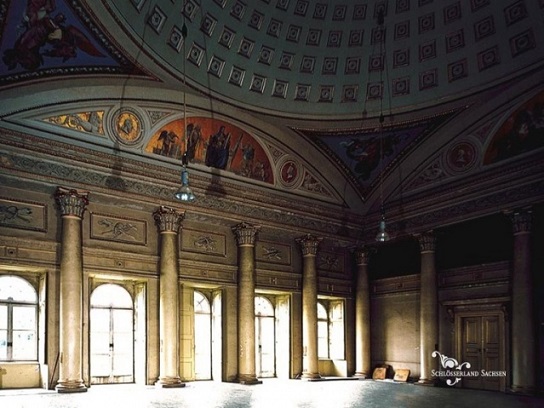Difference between revisions of "Pillnitz Castle"
| Line 11: | Line 11: | ||
<br> | <br> | ||
[[File:Sonnenuntergang in Pillnitz.jpg]] | [[File:Sonnenuntergang in Pillnitz.jpg]] | ||
| + | <br> | ||
| + | <br> | ||
| + | '''History:''' As early as the 14th century, a modest residential fortress existed on the site of today' castle. It was enlarged in the 16th and 17th centuries to a four-winged building. The château was acquired by the Wettin dynasty in 1694 when Elector John George IV of Saxony bought it as a present for his mistress, Magdalena Sibylla of Neidschutz. Both died soon afterwards. In 1706, John George's brother Augustus II the Strong gave the facilities to one of his numerous mistresses, Anna Constantia of Brockdorff, only to rescind the gift after she fled to Berlin in 1715. Augustus II then ordered the château to be converted into an oriental summer palace for riverside festivities, necessitating extensive rebuilding. | ||
| + | |||
| + | Starting in 1720, the first church and buildings were replaced by elaborate Baroque palaces designed by Matthäus Daniel Pöppelmann and Zacharias Longuelune. First, in 1720/21, the Riverside Palace (Wasserpalais) was constructed on the river bank to plans by Pöppelmann. The upper staircase built on the Elbe side in 1722 was supplemented in 1725 by water stairs forming a gondola dock, designed by the French architect Zacharias Longuelune. In 1723/24, an almost identical complement to the Riverside Palace, the Upper Palace (Bergpalais), was completed. At the same time, a garden was laid out between the two palaces. Construction continued until 1725, with a focus on the Chinoiserie style. Augustus apparently then lost interest in his renovated palace, shifting his focus to other locations. | ||
| + | |||
| + | In 1765, Elector Frederick Augustus I of Saxony, a great grandson of Augustus the Strong, made Pillnitz his summer residence. At the time, an English garden with an English Pavilion, a Chinese garden with a Chinese Pavilion and an artificial ruin were added. When the Countess' palace at Pillnitz Castle burnt down in 1818, Frederick Augustus asked his architect, Christian Friedrich Schuricht, to design a new palace at the same location. The Neoclassical New Palace (Neues Palais) was completed in 1826. | ||
| + | |||
| + | Pillnitz Castle was used as the summer residence of the House of Wettin until 1918. | ||
<br> | <br> | ||
<br> | <br> | ||
Revision as of 19:48, 27 July 2014

Description: Pillnitz Castle, or in German - Schloss Pillnitz is a restored Baroque castle at the eastern end of the city of Dresden in the German state of Saxony. It is located on the bank of the River Elbe in the former village of Pillnitz. Pillnitz Castle was the summer residence of many electors and kings of Saxony; it is also known for the Declaration of Pillnitz in 1791.
The Pillnitz Castle complex consists of three main buildings, the Riverside Palace (Wasserpalais) on the riverfront; the Upper Palace (Bergpalais) on the hillside, both Baroque with Chinoiserie elements; and the later Neoclassical New Palace (Neues Palais), which links them together on the east side. The buildings enclose a Baroque garden and are surrounded by a large public park.
Today, the castle houses the Arts and Crafts Museum (Kunstgewerbemuseum) of the Dresden State Art Collections and a Palace Museum (Schlossmuseum).

History: As early as the 14th century, a modest residential fortress existed on the site of today' castle. It was enlarged in the 16th and 17th centuries to a four-winged building. The château was acquired by the Wettin dynasty in 1694 when Elector John George IV of Saxony bought it as a present for his mistress, Magdalena Sibylla of Neidschutz. Both died soon afterwards. In 1706, John George's brother Augustus II the Strong gave the facilities to one of his numerous mistresses, Anna Constantia of Brockdorff, only to rescind the gift after she fled to Berlin in 1715. Augustus II then ordered the château to be converted into an oriental summer palace for riverside festivities, necessitating extensive rebuilding.
Starting in 1720, the first church and buildings were replaced by elaborate Baroque palaces designed by Matthäus Daniel Pöppelmann and Zacharias Longuelune. First, in 1720/21, the Riverside Palace (Wasserpalais) was constructed on the river bank to plans by Pöppelmann. The upper staircase built on the Elbe side in 1722 was supplemented in 1725 by water stairs forming a gondola dock, designed by the French architect Zacharias Longuelune. In 1723/24, an almost identical complement to the Riverside Palace, the Upper Palace (Bergpalais), was completed. At the same time, a garden was laid out between the two palaces. Construction continued until 1725, with a focus on the Chinoiserie style. Augustus apparently then lost interest in his renovated palace, shifting his focus to other locations.
In 1765, Elector Frederick Augustus I of Saxony, a great grandson of Augustus the Strong, made Pillnitz his summer residence. At the time, an English garden with an English Pavilion, a Chinese garden with a Chinese Pavilion and an artificial ruin were added. When the Countess' palace at Pillnitz Castle burnt down in 1818, Frederick Augustus asked his architect, Christian Friedrich Schuricht, to design a new palace at the same location. The Neoclassical New Palace (Neues Palais) was completed in 1826.
Pillnitz Castle was used as the summer residence of the House of Wettin until 1918.


[[]]
[[]]
Websites
http://www.flickriver.com/places/Germany/Saxony/Dresden/Pillnitz/ (Encyclopedic photo collection of Pillnitz Castle)
http://en.wikipedia.org/wiki/Pillnitz_Castle